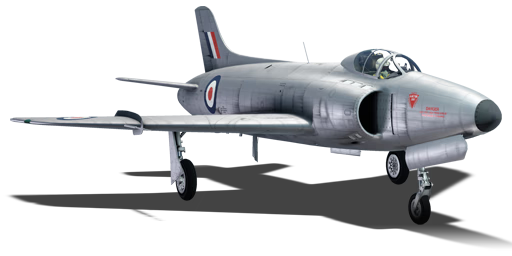



Following the end of WWII, a new British government decided to focus their efforts into rebuilding the nation, under the assumption that another major conflict would not occur for at least a decade. During this time, Air Ministry Specifications were primarily issued for research designs, rather than any military requirements. As a result, at the dawn of the Cold War in the late 1940s, the RAF quickly realised that it was lagging behind in aerial capabilities, and pressed for the development of new fighter aircraft with the latest features, such as swept wings. Two designs that garnered particular interest were the Hawker Hunter and Supermarine Swift. The Swift was developed from an experimental prototype based on the Supermarine Attacker, which had been fitted with swept wings and tail. It was rushed through testing and production, with an initial order of 100 aircraft to act as insurance in case of failure in the Hunter project. However, technical challenges delayed both projects despite the high priority; the Swift F.1 eventually entered service in February 1954, with the F.2 variant appearing in the same month. Due to the hasty development process and panicked introduction, the Swift F.1 experienced a spate of accidents, resulting in the grounding of the type by August. By the end of 1954, all fighter variants of the Swift had been replaced by the new and far more capable Hawker Hunter.
Introduced in Update 1.91 "Night Vision", the Swift F.1 serves as a great primer for the Hunters later in the tree, featuring much the same characteristics and flaws as its larger cousins. With decent acceleration, top speed, and energy retention, the Swift operates well in zooming around the battlefield, picking off stray or distracted enemies, and quickly evacuating from danger. It also boasts the same powerful 30 mm ADEN cannons, allowing any opponent to be destroyed in a single pass. The Swift does lack in manoeuvrability, particularly at high speeds; however, this can be mitigated by using its extremely strong takeoff flaps as makeshift airbrakes. However, manoeuvring will cause the Swift to quickly lose its all-important energy, so dogfights should be heavily avoided.
flaps
flaps
flaps
brake
| Belt | Belt filling | Armor penetration (mm) at a distance: | |||||
|---|---|---|---|---|---|---|---|
| 10 m | 100 m | 500 m | 1000 m | 1500 m | 2000 m | ||
| AP/HEI-T | 37 | 34 | 22 | 13 | 8 | 5 | |
| AP/HEI-T/AP | 37 | 34 | 22 | 13 | 8 | 5 | |
| HEF-I/HEI-T | 4 | 4 | 4 | 4 | 4 | 4 | |
| AP/HEF-I | 37 | 34 | 22 | 13 | 8 | 5 | |
8 × RP-3 rockets












Flight performance | |
|---|---|
Survivability |
|---|
Weaponry | |
|---|---|